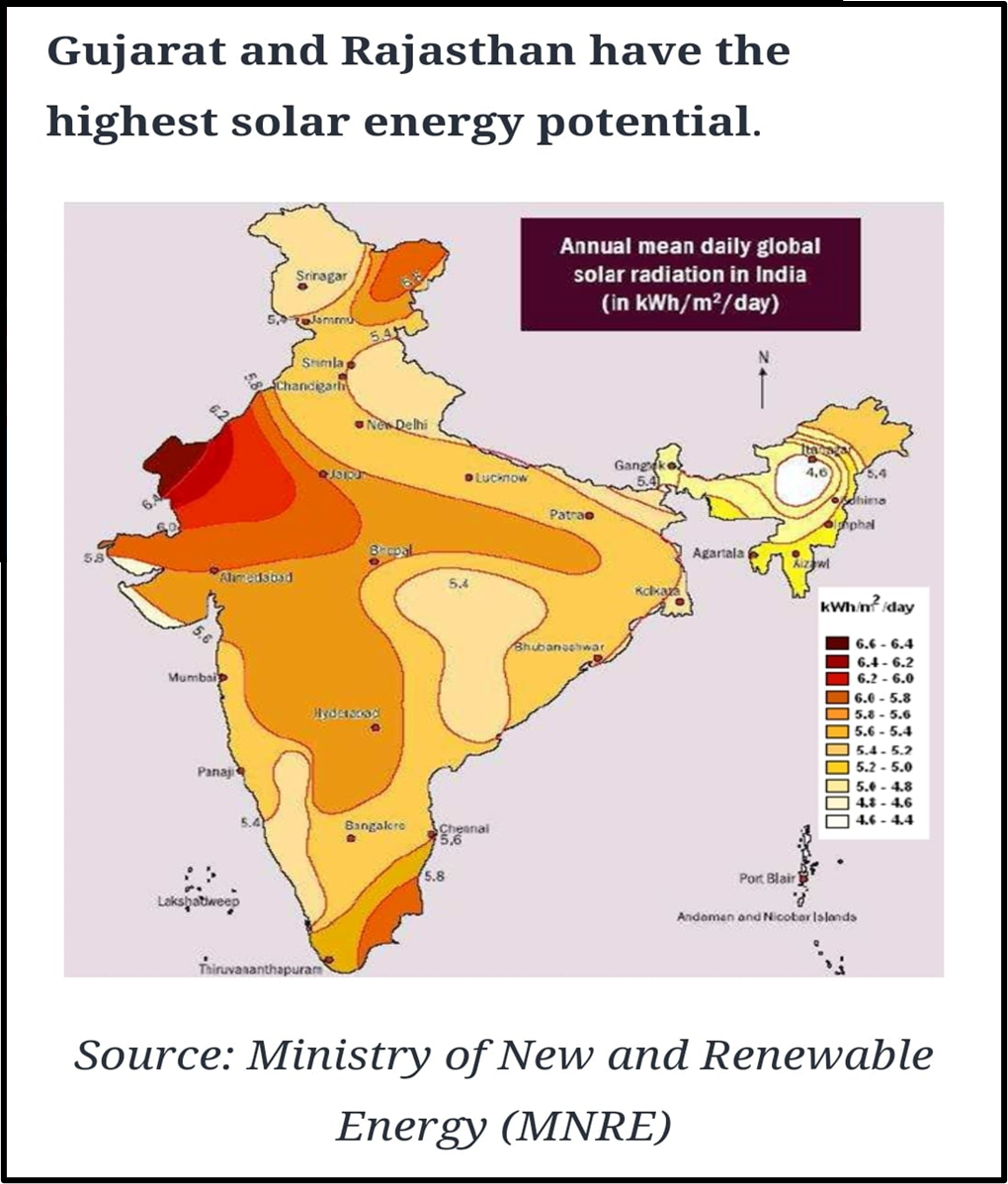THE ‘IMPORT RESTRICTIONS’ ON SOLAR PV CELLS
Syllabus:
GS-III:
Energy Infrastructure:
- Includes power generation, transmission, and distribution networks.
- Sources: Thermal, hydroelectric, nuclear, renewable (solar, wind, etc.).
- Infrastructure: Power plants, substations, grids, and renewable energy installations.
Why in the news
India reinstated import restrictions on solar PV cells, aiming to reduce dependency, especially on Chinese imports, amid global supply chain disruptions.
source:researchgate
About the Import Restrictions on Solar PV Cells:
- India imposes a 40% customs duty on PV modules and 25% on PV cells, which were halved due to slowed solar capacity additions and import dependence.
- Developers quoted low tariffs relying on imports, mainly from China and Vietnam, for about 30 GW capacity projects.
Understanding photovoltaic (PV) cells and Its Working:
What is the International solar alliance (ISA)?
|
Approved List of Models and Manufacturers of Solar Photovoltaic Modules (ALMM List) and its Re-Implementation:
- The Approved List of Models and Manufacturers of Solar Photovoltaic (PV) Modules, or ALMM list, was re-implemented after being kept in abeyance for two years.
- This list consists of manufacturers eligible for use in Government Projects, including those for sale of electricity to Central and State Governments.
- Reasons for Re-Implementation:
- The re-implementation aims to support India’s renewables manufacturing ecosystem.
- It follows the Ministry of New and Renewable Energy’s (MNRE) order to re-implement the ALMM list, initially issued in
About China’s Dominance in Solar PV Module Imports:
- China became a dominant player due to its cost competitiveness and government policies prioritising solar PV as a strategic sector.
- Chinese imports accounted for over 80% of India’s solar cell manufacturing capacity and 63% of solar PV modules.
Understanding the Factors Leading to Import Restrictions:
- Overdependence on Imports:
- India’s domestic renewables sector relied heavily on imports, with China being a major supplier.
- This overdependence raised concerns about India’s ability to meet the spike in demand for solar power production equipment.
- Government Initiatives:
- The Production Linked Incentive (PLI) scheme aimed to boost domestic manufacturing capacities and enhance price competitiveness.
- However, the domestic manufacturing capacity was still in a relatively low stage.
- Global Supply Chain Disruptions:
- The issue of import restrictions gained prominence during the COVID-19 pandemic due to severe disruptions in global supply chains.
- Finance Minister Nirmala Sitharaman proposed the PLI scheme in the Union Budget of 2022-23 to address this issue.
Government Initiatives to Address Import Dependence:
- Production Linked Incentive (PLI) Scheme for Solar PV Modules:
- Objective: Attract investment in the solar sector.
- Modified Special Incentive Package Scheme (M-SIPS):
- Offer: 20-25% subsidy on capital expenditure.
- Purpose: Encourage investment in manufacturing facilities.
- Atal Jyoti Yojana (AJAY):
- Launch: September
- Objective: Install solar street lighting systems in states with low grid power coverage.
- PM KUSUM (Kisan Urja Suraksha evam Utthaan Mahabhiyan):
- Goal: Add 30,800 MW of solar and renewable capacity by
- Financial Support: 34,422 Crores.
- Solar Park Scheme:
- Plan: Establish solar parks with a capacity of around 500 MW
- Implementation: Across multiple states.
- SRISTI Scheme (Sustainable Rooftop Implementation of Solar Transfiguration of India):
- Objective: Promote rooftop solar power
- National Solar Mission:
- Purpose: Promote ecologically sustainable growth.
- Address: India’s energy security challenge.
Challenges of Solar Energy Manufacturing in India:
- Capital Intensive: Solar cell manufacturing requires substantial capital investment.
- High Cost of Debt: India’s high debt interest rates (11%) compared to China (5%) hinder cost competitiveness.
- Technology Intensive: Complex manufacturing process demands access to advanced technology.
- Limited Access to Latest Technologies: Companies reluctant to share R&D advancements, hindering technology access.
- Lack of Integrated Set-up: Despite FDI, fragmented setup leads to higher production costs.
- Raw Material Supply Crunch: Shortage of silicon wafer, a critical raw material.
- Rapid Technological Upgrades: Upgrades every 8-10 months make manufacturing inefficient for new entrants.
Scope for Solar Energy in India:
Ambitious Targets:
- India aims to achieve 500 GW of installed capacity from non-fossil fuels by 2030, driving the scaling of solar power.
- Solar power accounted for about one-third of all energy generated from renewables between April last year and February this year.
Fastest Growth Rate:
- India accounts for the fastest rate of growth for demand for electricity through 2026 among major economies, according to the
- This growth is attributed to strong economic activity and increasing consumption.
Unexplored Potential:
- India has an estimated solar power potential of99 GW, indicating vast untapped opportunities.
- Government efforts aim to harness this potential through various schemes and programs.
Conclusion:
By re-implementing the ALMM list and focusing on domestic manufacturing, India aims to reduce its dependence on imported solar PV cells and modules while accelerating its transition towards renewable energy.
Mains Practice Question:
Discuss the significance of the ‘import restrictions’ on solar PV cells in India, focusing on the re-implementation of the ‘Approved List of Models and Manufacturers of Solar Photovoltaic Modules’ (ALMM list) after being kept in abeyance for two years. Also, analyse how China became a dominant player in the import of solar PV modules, and examine the scope of solar energy in India’s future energy landscape.




